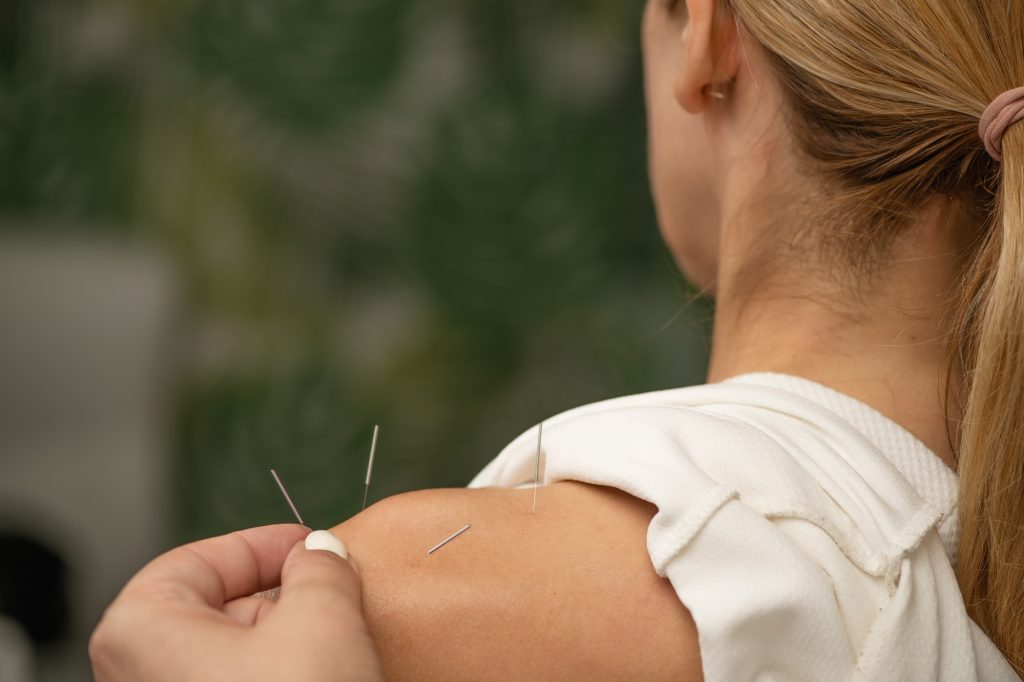Acupuncture for Back Pain: A Natural and Effective TCM Solution
- G&G TCM
What Is Acupuncture for Back Pain?
Acupuncture for back pain is a therapeutic approach within Traditional Chinese Medicine (TCM) that uses fine, sterile needles inserted at specific body points (acupoints) to relieve pain, enhance circulation, and stimulate the body’s natural healing mechanisms.
At G&G TCM Medical Singapore, acupuncture is performed by certified TCM physicians trained in anatomy, meridian theory, and pain management, ensuring both safety and measurable relief for conditions like lower back pain, sciatica, and muscle tension.
How Acupuncture Relieves Back Pain
The TCM Perspective
In Traditional Chinese Medicine, back pain often arises from Qi (energy) stagnation, blood stasis, or kidney deficiency. When Qi flow in the meridians is blocked, pain and stiffness appear.
Acupuncture helps by:
- Unblocking meridians to restore natural energy flow
- Stimulating blood circulation to affected areas
- Reducing inflammation and relaxing tense muscles
- Balancing yin-yang for overall system harmony
The Biomedical Explanation
From a scientific viewpoint, acupuncture:
- Stimulates endogenous opioid release (natural painkillers)
- Improves neurotransmitter regulation (serotonin, dopamine)
- Enhances local microcirculation and tissue repair
- Reduces nerve sensitivity associated with chronic pain
Common Types of Back Pain Treated with Acupuncture
| Type of Back Pain | Common Symptoms | Typical Acupoints Used | Expected Outcomes |
|---|---|---|---|
| Lower Back Pain (Lumbago) | Dull ache, stiffness | BL23, BL25, GV3 | Relieves pain and improves flexibility |
| Sciatica | Radiating pain down leg | BL40, GB30, BL54 | Reduces nerve pressure and restores function |
| Muscle Strain | Tightness, soreness | Ashi points, SI3, BL60 | Loosens muscles and reduces inflammation |
| Postural Back Pain | Pain from long sitting | BL17, GV4, GB34 | Corrects alignment and relaxes tissues |
Acupuncture is also used in combination with Tuina massage, moxibustion, or herbal therapy for long-term results.
Research and Clinical Evidence
Several modern studies have demonstrated acupuncture’s effectiveness for chronic and acute back pain:
- A 2020 study in Annals of Internal Medicine found that acupuncture reduced chronic back pain intensity by up to 50% compared to standard physiotherapy.
- A Singapore-based clinical trial (National University Health System, 2021) showed that acupuncture improved mobility scores and reduced pain medication dependency after just 6 sessions.
- According to the World Health Organization (WHO), acupuncture is recognized as a proven therapy for lumbar pain, sciatica, and muscle spasm.
At G&G TCM Medical, our experienced practitioners combine modern diagnostic methods with classical TCM theory to ensure evidence-based, personalized pain relief.
Step-by-Step: What Happens During an Acupuncture Session
- Initial Consultation – The TCM doctor performs a health assessment using pulse and tongue diagnosis to identify the root cause of pain.
- Treatment Planning – A customized acupuncture plan is created, targeting specific meridians linked to the lower back and kidneys.
- Needle Insertion – Fine, sterile needles are inserted at precise points; sensations of warmth or tingling may occur.
- Stimulation & Relaxation – The needles remain for 20–30 minutes while energy flow is balanced.
- Post-Treatment Advice – The practitioner may suggest stretching, posture correction, or herbal therapy to maintain results.
Duration: Most patients notice improvement after 3–5 sessions, depending on the chronicity of the pain.
Benefits of Acupuncture for Back Pain
- Provides natural pain relief without drugs or surgery
- Improves range of motion and flexibility
- Reduces stress and muscle tension
- Supports nerve recovery and tissue repair
- Promotes whole-body wellness and energy balance
Complementary Treatments
For patients with related conditions such as sleep disturbance or anxiety, acupuncture can also be combined with other therapies.
Explore our article on acupuncture for insomnia treatment to see how acupuncture promotes holistic healing beyond pain management.
Case Study: Chronic Lower Back Pain Recovery
Patient Profile:
- Age: 45-year-old office worker
- Symptoms: 2-year history of lower back stiffness and numbness in right leg
Treatment Plan:
- 8 acupuncture sessions + Tuina massage twice weekly
- Herbal decoction for kidney yang deficiency
Results:
After 5 weeks, patient reported 70% reduction in pain intensity and improved flexibility. Follow-up MRI showed reduced muscle tension in lumbar region. This demonstrates the synergistic benefits of integrating acupuncture and TCM herbal therapy for chronic pain management.
Actionable Tips: Maintaining a Healthy Back After Acupuncture
- Maintain good posture during work and sleep
- Practice gentle stretching or yoga daily
- Avoid prolonged sitting or heavy lifting
- Stay hydrated and eat anti-inflammatory foods
- Schedule regular TCM checkups to maintain body balance
(Tip: Your TCM doctor can also recommend herbal supplements to support muscle recovery and prevent relapse.)

Conclusion: Natural, Safe, and Proven Relief with G&G TCM Medical
Acupuncture is more than a pain management tool, it’s a holistic system that restores energy balance, strengthens internal organs, and promotes long-term spinal health. At G&G TCM Medical Singapore, our certified TCM practitioners combine traditional expertise with modern evidence to provide safe, effective solutions for back pain, sciatica, and spinal tension. Experience the healing benefits of acupuncture today, visit our Chinatown clinic or reach out for a consultation: Contact Us or Learn More About Our Services.
FAQs Section
Is acupuncture painful?
No. Most patients describe the sensation as a mild tingling or dull ache that quickly subsides. The needles used are extremely fine and professionally handled.
How many sessions are needed for relief?
Mild cases may improve within 3–5 treatments, while chronic conditions could require 8–10 sessions for lasting benefits.
Can acupuncture be combined with physiotherapy or medication?
Yes. Many patients use acupuncture alongside physiotherapy or Western treatments to enhance recovery. Always inform your practitioners to coordinate care safely.
Are there any side effects?
When performed by licensed TCM doctors, side effects are rare and minor (slight redness or soreness at needle sites).
Who should avoid acupuncture?
Patients with bleeding disorders, pacemakers, or severe infections should consult their physician before undergoing treatment.

